2018 - une année riche d'événements
Tout doucement, (ou pas finalement), nous nous rapprochons de la fin de l'année et des rétrospectives. Nous avons terminé notre saison d'automne, de foires et de portes ouvertes, alors voici notre petit album souvenirs.
Une saison de foires aux plantes se prépare avec soin, que ce soit le choix des plantes ou une façon de les présenter, très tôt nous cogitons, nous fouinons dans les nouvelles listes de nos partenaires, nous en cherchons de nouveaux. Bref, pour le printemps, notre travail de fourmis commence maintenant, des mois à l'avance.
HIVER-PRINTEMPS 2018
En janvier, une fois n'est pas coutume, nous visitons la foire d'Essen, en Allemagne. On y trouve quelques nouveautés, même si en matière de conifères, l'offre reste plutôt habituelle.
.JPG)
.JPG)

En février, ce sont les jardins d'hiver qui nous appellent et nous faisons la rencontre de Christian Peyron, un artiste jardinier magnifique.



L'homme est surprenant à plus d'un titre
.JPG)

Nous profitons d'être dans la région pour saluer Simone Rivation et Sylvain Brunet-Manquat, et aussi visiter le Jardin Botanique de Lyon.
.jpg)
.JPG)
.JPG)
En mars, nous avons visité quelques uns de nos partenaires et d'autres plus connus.

A Boskoop, en matière de plantes, on trouve de tout, toute sorte de pépinières, jardineries et dans la pluspart d'entre elles, si on prend la peine de fouiner, on déniche de véritables petits trésors raricimes.
Esveld est un incontournable.
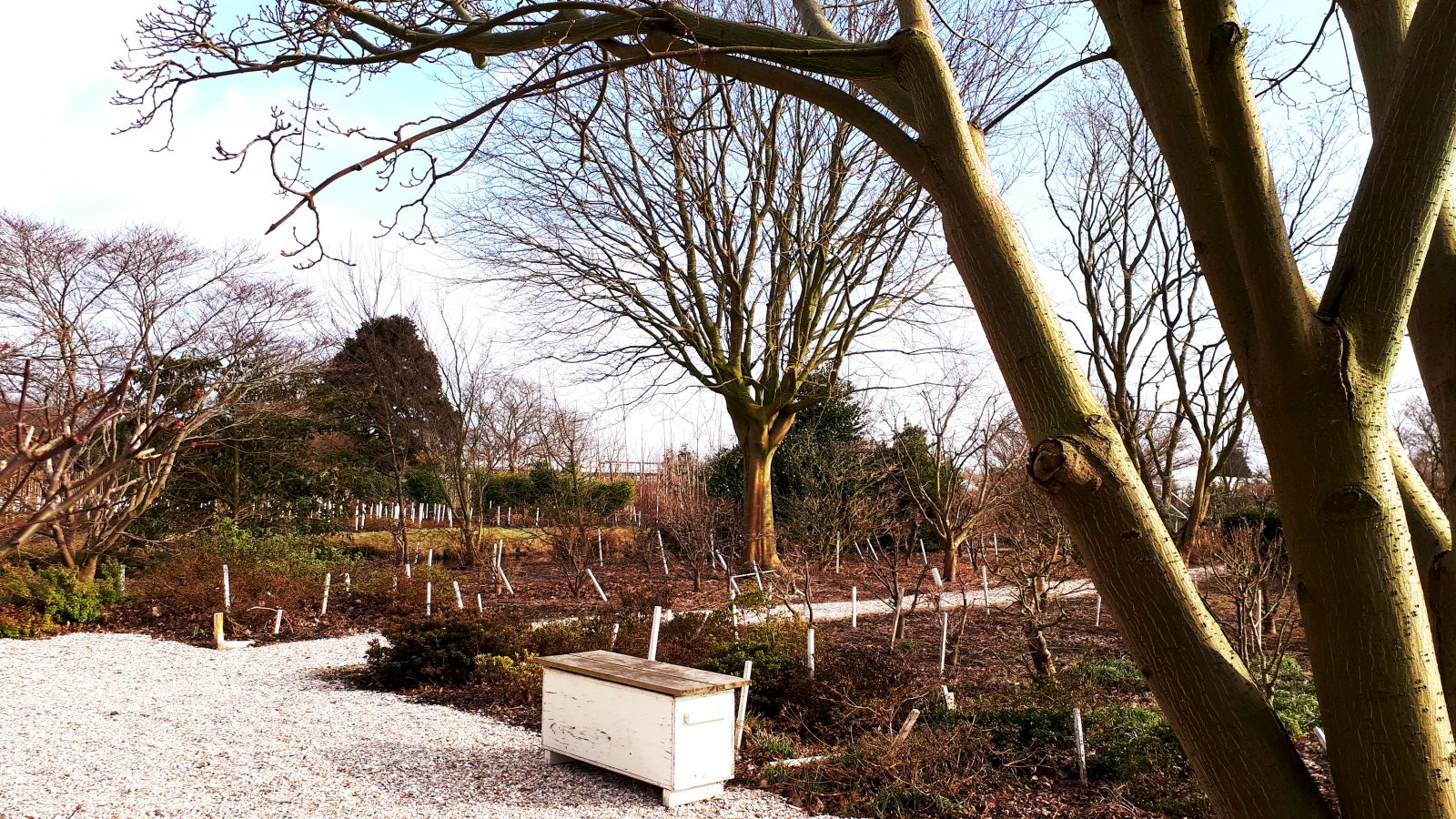
Promenade dans l'aceratum et dégustation de thé, à l'anglaise. un grand plaisir pour nous.


Le 11 mars, nous visitons également la Fondation Kreftenbroeck Arboretum à Rhodes-Saint-Génèse et son très beau jardin, avec notamment un escaliers aux conifères, mémoire d'une époque où les jardiniers aimaient les utiliser.
.JPG)
.JPG)
Nous y retrouvons avec plaisir Sandrine et Thierry Delabroye avec leur fabuleuse collection d'Helebores.
.JPG)
Les 28 et 29 avril 2018 - Ce sont les JOURNEES des PLANTES rares et de collection à la FEUILLERIE DE CELLES
Dans ce domaine magnifique, entretenu avec soin et passion, c'est toujours un plaisir de pouvoir fouler l'endroit avant le public. moment de zenitude.

Cette année les kalmias n'ont jamais été aussi beaux. Ils sont très prometteurs. Les conifères sont tout en couleur avec les nouvelles pousses et les cônes colorés.


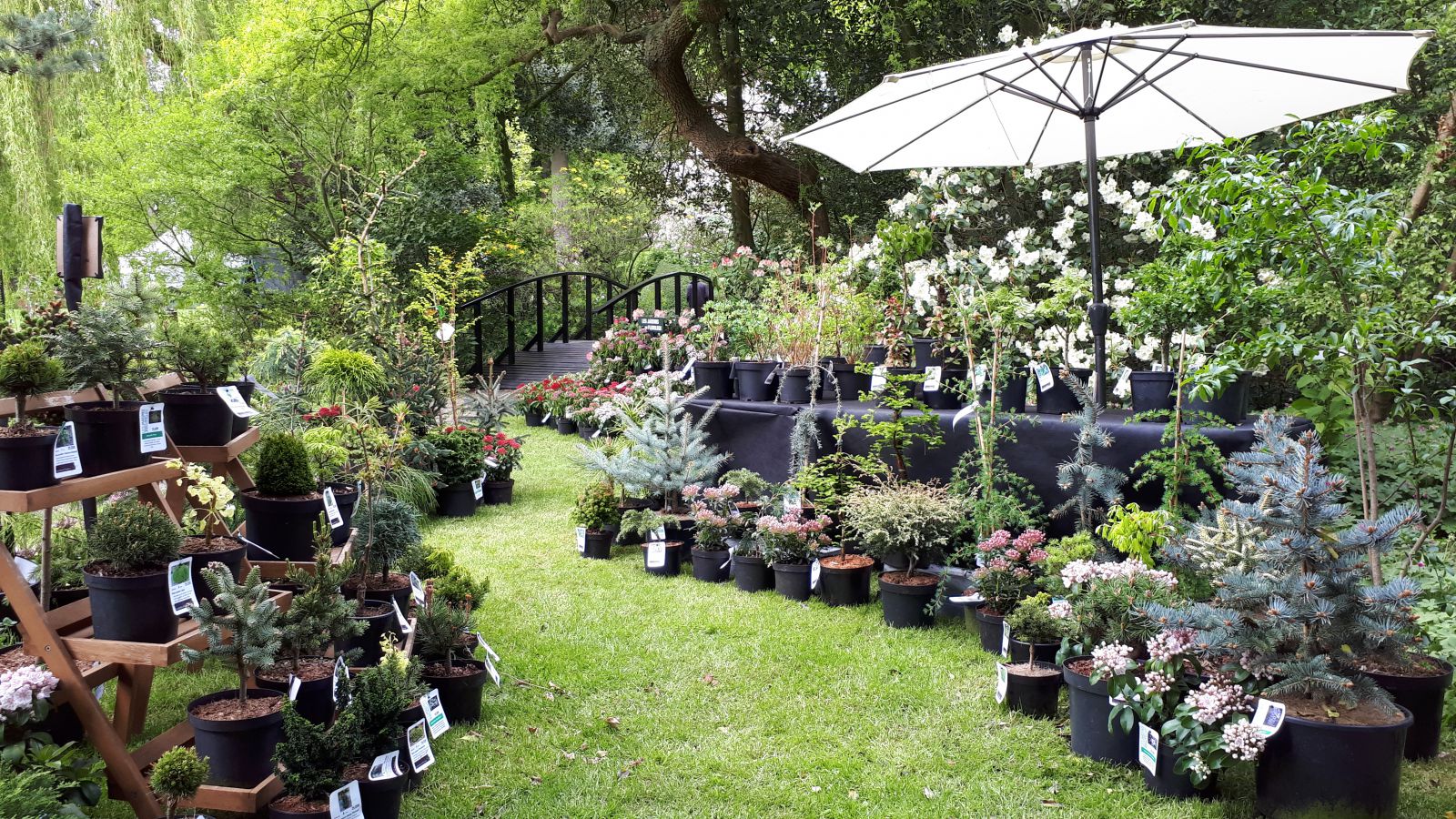
Ness s'est encore beaucoup amusée avec la balançoire de Palick, mais elle s'est aussi régalée avec le jus de pommes de Carine gdf.
Dimanche il a beaucoup plu et Bernard Cwiek des Hôtels à insectes lui a pretté son beau chapeau de lutin géant.

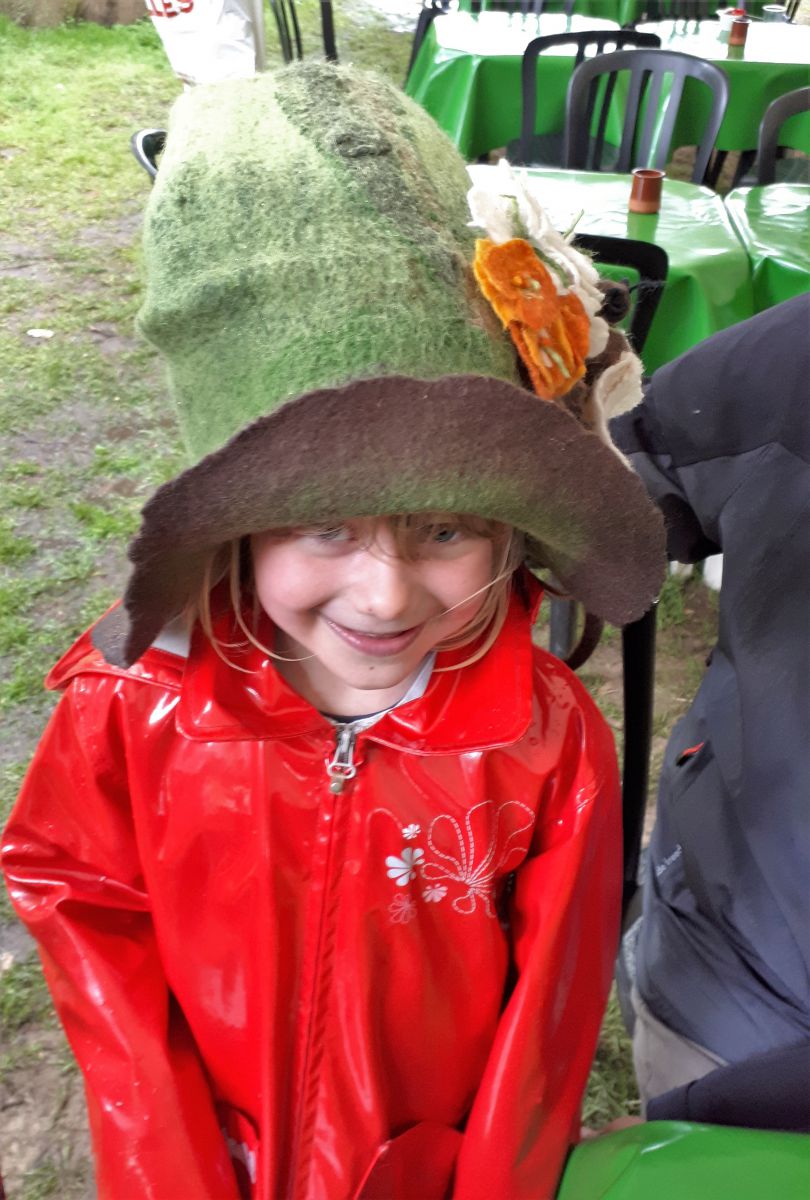
Le 15 avril, nous allons à KALMTHOUT.
Abraham Rammeloo nous a chaleureusement invité pour la foire aux plantes et, une fois n'est pas usuel, c'est comme visiteurs que nous découvrons ce bel arboretum à Pâques.

Laurent se prend pour un oeuf et je me pâme auprès des magnolias.



Le 05 mai, avec le cercle des dendrologues belges, nous visitons une fabuleuse collection de Wisteria, près de Gand.

Les 10 et 11 mai, nous sommes partis dans le nord de l'Allemagne, sur les conseils d'un de nos partenaires, visiter l'Exposition de Rhododendrons de Westerstede.
Nous nous sommes régalés. L'exposition est exceptionnelle, présantant des plantes de qualité et des cultivars intéressants à plus d'un titre.

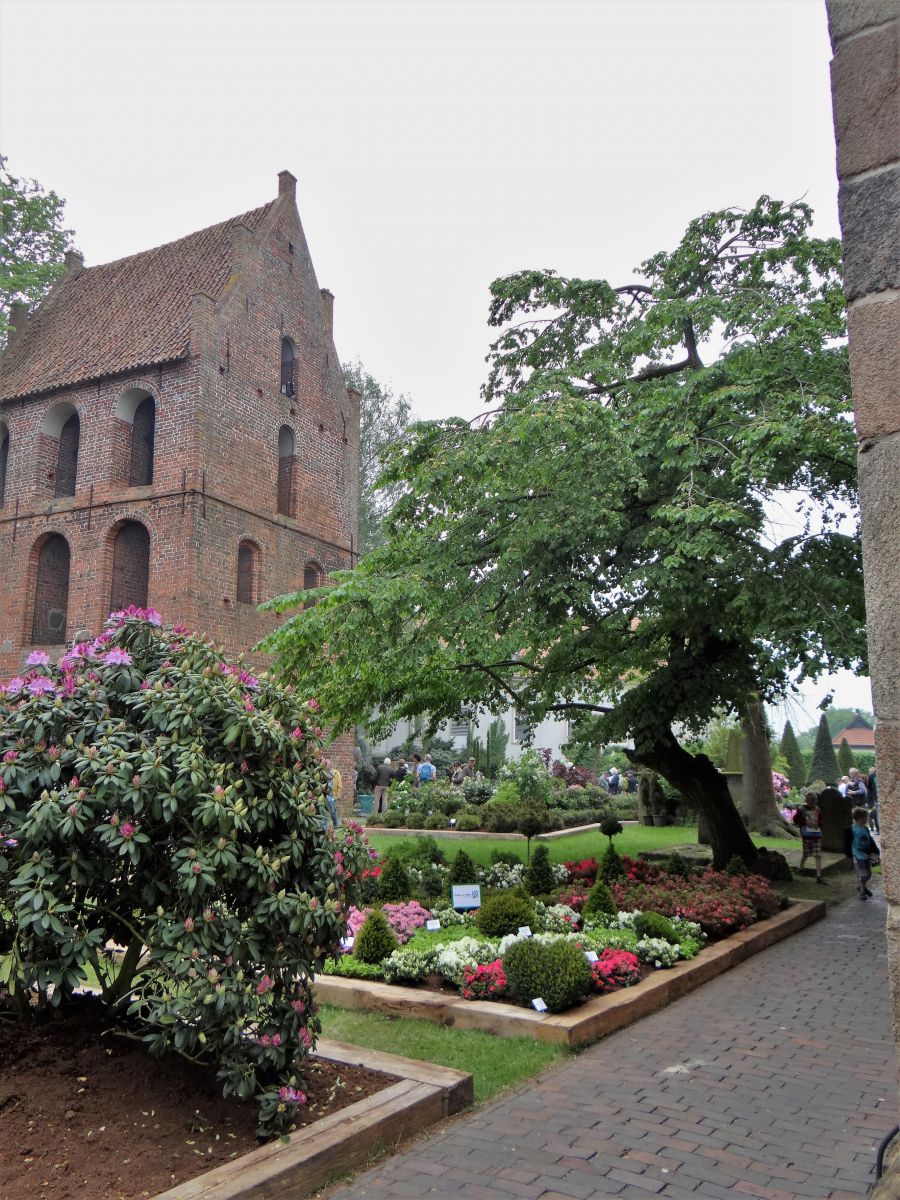
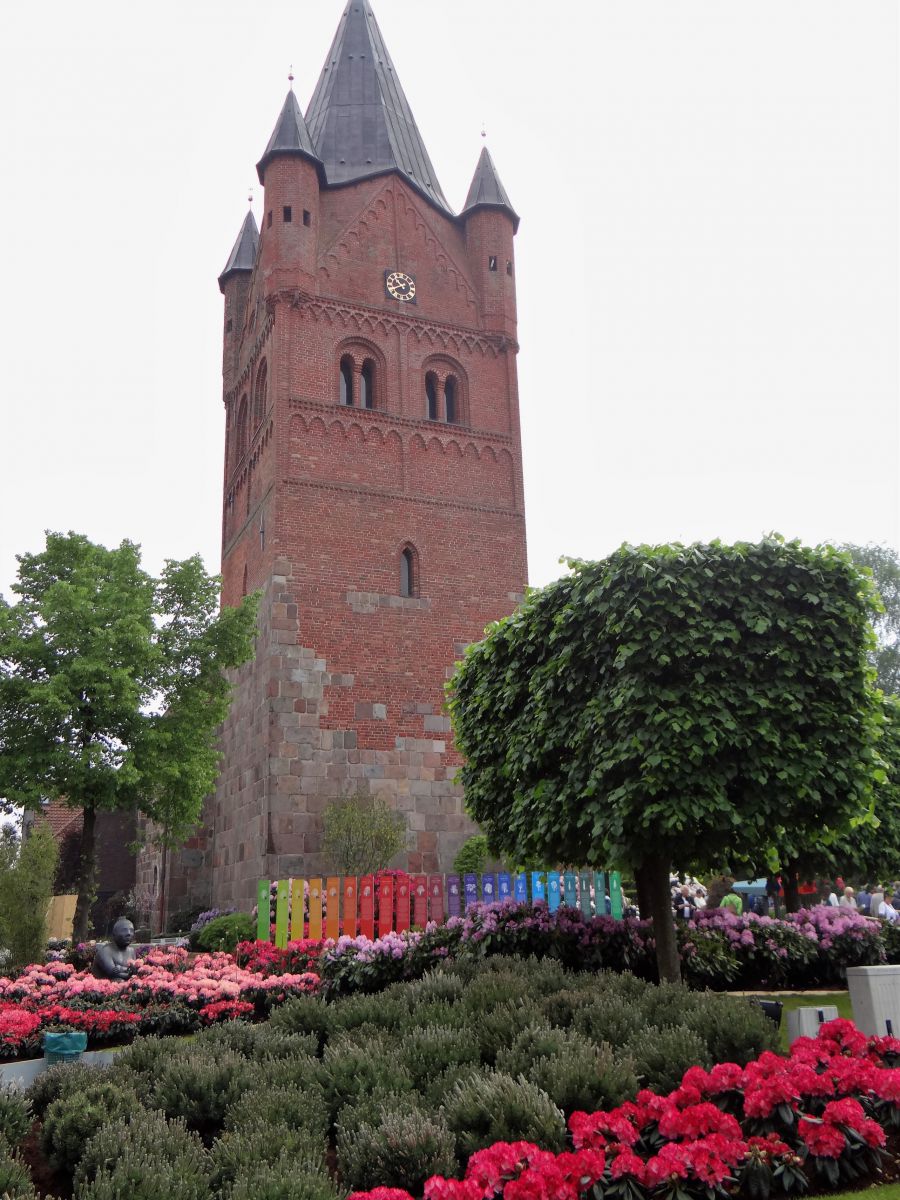





Dans cette région, riche en tourbières, on y trouve beaucoup de pépinières, notamment spécialisées en rhododendrons, mais aussi en conifères. Les allemands utilisent leurs techniques de culture avec zèle; les plantes sont taillées, densifiées et utilisées parfois de façon inattendue, comme ce tapis carré de Pinus, ci dessus, à droite.
Une partie de l'expo se consacre aux produits de bouche et à la déco, avec des tendances un peu différentes des nôtres.


Du 18 au 20 mai - Les JOURNEES des PLANTES de CHANTILLY


La qualité de notre stand nous rapporte le ruban d'or, trophée distribué à chacun, de l'or au bronze, afin de vanter nos qualités. Tout est pris en compte: la qualité des plantes et l'intérêt des cultivars, la présentation et la justesse de l'étiquettage. Cela fait plusieurs éditions de suite que nous sommes évalués au meilleur niveau et nous en sommes très contents. C'est une belle récompense.


Encore de belles compositions végétales à Chantilly.
(1).JPG)
(1).JPG)
Et après les efforts... le réconfort.
Les visiteurs sont rentrés chez eux, les bras chargés de nos merveilles et nous continuons à flâner dans le domaine.

NOS PORTES OUVERTES se déroulent le WE suivant, les 26 et 27 mai.
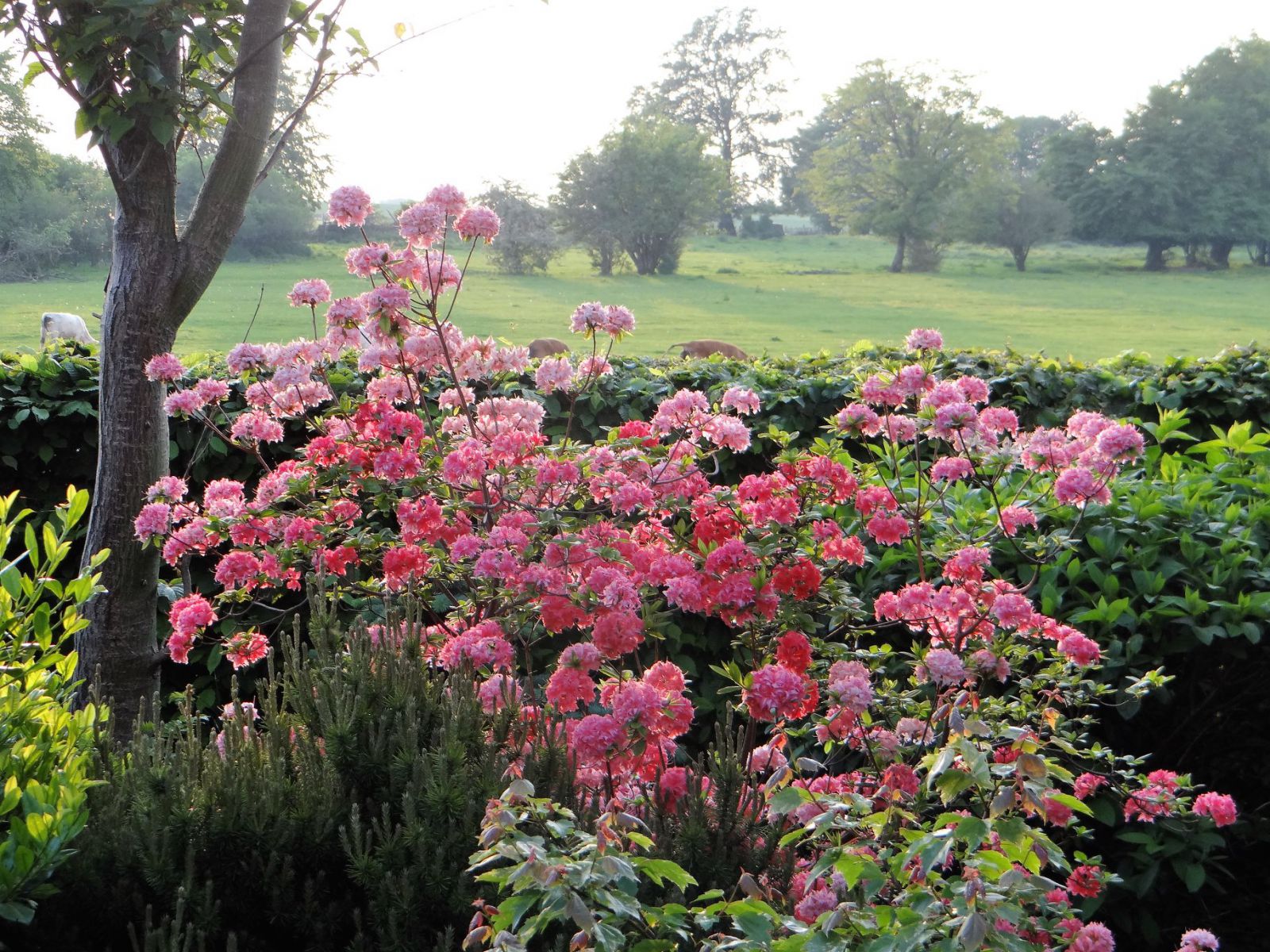


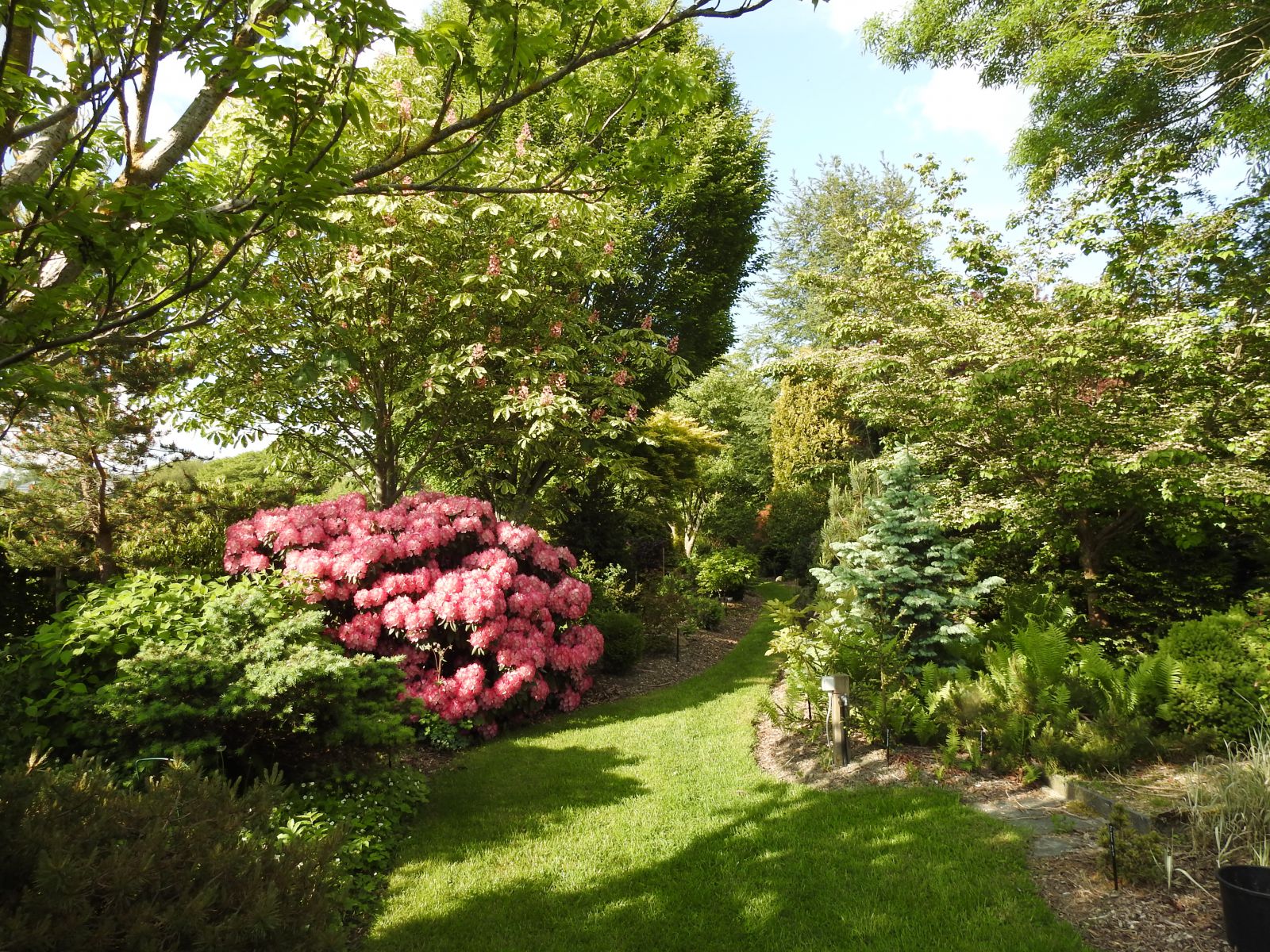
Et puis la grèle, dès le lundi. 20 minutes d'un vent soutenu, alignant, avec méthode, ses jets de billes glacées.
Le jardin est dévasté en un clin d'oeil, mais nous le savons, il redressera la tête.


La dernière foire de la saison, une très sympatique journée dans le pays de Liège, au Chateau d'Englebermont, le 3 juin.

C'est toujours l'occasion de se taquiner les uns et les autres.
.JPG)

Le dimanche 24 juin, une dernière visite de nos jardins, lors du Rallye des jardins ouverts de Belgique en province de Luxembourg.
Nous avons eu l'occasion de vous accueillir une nouvelle fois avec beaucoup de bonheur.

A SUIVRE... la partie 2: l'été et l'automne 2018.